Are you a high school athlete with dreams of playing college sports? The path to getting recruited can feel overwhelming. Each year, thousands of talented athletes compete for a limited number of spots. But knowing the sports recruitment landscape, understanding what college coaches are looking for, and taking proactive steps to market yourself can drastically improve your chances of landing a spot on a college team.
This comprehensive playbook is designed to guide you through every stage of the sports recruitment process. We’ll break down the key concepts, offer actionable strategies, and provide insights to help you navigate this exciting, yet challenging journey. Whether you’re a freshman just starting to think about college or a senior feeling the pressure to commit, this is your go-to resource.
Get ready to take control of your athletic future.
Athletic Recruitment: Complete Playbook
What is Sports Recruitment?
Sports recruitment is the process by which college coaches identify, evaluate, and ultimately offer athletic scholarships to prospective student-athletes. It is, at its core, a matching process. Coaches are looking for athletes who can contribute to their program’s success, while athletes are seeking opportunities to continue their athletic careers at the collegiate level while pursuing an education.
The sports recruitment process can vary significantly depending on the sport, division level (NCAA Division I, II, III, NAIA, NJCAA), and the individual college or university. Some coaches actively recruit athletes as early as their freshman year of high school, while others may focus their efforts on upperclassmen.
The recruitment process typically involves several key stages:
- Identification: Coaches identify potential recruits through various means, including attending high school games, reviewing highlight videos, and receiving recommendations from scouts or other coaches.
- Evaluation: Once a coach identifies a potential recruit, they will evaluate the athlete’s skills, athletic abilities, academic performance, and character. This may involve attending games or tournaments, requesting academic transcripts, and conducting interviews.
- Communication: Coaches communicate with potential recruits through emails, phone calls, and social media. They may also invite athletes to visit the campus for official or unofficial visits.
- Offer: If a coach is sufficiently impressed with an athlete, they may extend an offer of admission and/or an athletic scholarship.
Why is Athletic Recruitment Important?
For student-athletes, successful sports recruitment means the chance to continue playing the sport they love at a higher level, gain access to quality education, and potentially secure financial aid through athletic scholarships. For college programs, successful recruitment ensures a steady influx of talent that allows them to compete effectively and maintain a winning tradition.
Athletic recruitment is important for several key reasons:
- Opportunity for Athletes: It provides a pathway for talented athletes to pursue their passion for sports while earning a college degree. This can open doors to future career opportunities both in and out of the sports world.
- Scholarship Opportunities: Athletic scholarships can significantly reduce the financial burden of college tuition, making higher education more accessible for many student-athletes.
- Competitive Advantage for Colleges: Successful recruitment allows colleges to build strong athletic programs that can compete at the highest levels. This can enhance the school’s reputation, attract more students, and generate revenue through ticket sales and merchandise.
- Personal Development: College athletics can provide student-athletes with valuable life skills such as teamwork, leadership, time management, and resilience. The recruitment process itself can also help athletes develop communication, networking, and self-marketing skills.
Understanding the Different Levels of College Athletics
The landscape of college athletics is diverse, with numerous governing bodies and division levels. Understanding these different levels is crucial for setting realistic goals and targeting the right schools during the recruitment process. The primary organizations governing college sports in the United States are:
- National Collegiate Athletic Association (NCAA): The largest governing body for college sports, with three divisions (Division I, II, and III).
- National Association of Intercollegiate Athletics (NAIA): A smaller association than the NCAA, offering athletic opportunities at four-year colleges and universities.
- National Junior College Athletic Association (NJCAA): Governs two-year community and junior colleges, providing opportunities for athletes to develop and transfer to four-year institutions.
Here’s a breakdown of the different divisions within these organizations:
NCAA Division I
Division I (DI) is the highest level of college athletics, featuring the largest universities with the most comprehensive athletic programs. DI schools typically offer the most generous athletic scholarships and attract the most talented athletes. Competition is fierce, and the demands on student-athletes are significant.
- Characteristics: Big schools, big budgets, lots of media attention.
- Scholarships: Full athletic scholarships are common, covering tuition, room and board, and other expenses.
- Competition: Very high level, requiring exceptional athletic ability and dedication.
- Academic Rigor: High academic standards are required for admission and continued eligibility.
NCAA Division II
Division II (DII) schools are generally smaller than DI institutions and offer a more balanced approach to academics and athletics. While athletic scholarships are available, they are often partial scholarships, covering a portion of tuition or other expenses. DII athletics provide a competitive environment with a greater emphasis on the overall student-athlete experience.
- Characteristics: Mid-sized schools, moderate budgets, regional competition.
- Scholarships: Partial athletic scholarships are common.
- Competition: High level, but with a greater focus on balancing academics and athletics.
- Academic Rigor: Strong academic standards are in place.
NCAA Division III
Division III (DIII) schools prioritize academics above athletics. DIII institutions do not offer athletic scholarships, and student-athletes participate for the love of the game and the overall college experience. DIII athletics provide a supportive environment for athletes who want to compete at the collegiate level without the intense pressure and time commitment of DI or DII.
- Characteristics: Small schools, low budgets, focus on academics.
- Scholarships: No athletic scholarships are offered. Financial aid is need-based or merit-based.
- Competition: Competitive, but with a strong emphasis on participation and personal growth.
- Academic Rigor: Academics are the top priority.
NAIA
The NAIA is an athletic association for small colleges and universities. NAIA schools offer athletic scholarships and provide a competitive environment for student-athletes. The NAIA emphasizes character development, sportsmanship, and academic achievement.
- Characteristics: Small colleges, moderate budgets, regional competition.
- Scholarships: Athletic scholarships are available.
- Competition: Competitive, with a focus on character and sportsmanship.
- Academic Rigor: Academic standards are in place.
NJCAA
The NJCAA governs athletics at two-year community and junior colleges. The NJCAA provides opportunities for athletes to develop their skills and gain exposure to four-year college coaches. Many NJCAA athletes transfer to four-year institutions after one or two years.
- Characteristics: Two-year colleges, developmental focus, transfer opportunities.
- Scholarships: Athletic scholarships are available at some NJCAA schools.
- Competition: Varies depending on the sport and region.
- Academic Rigor: Academic standards are required for eligibility.
Assessing Your Athletic and Academic Profile
Before embarking on the sports recruitment journey, it’s essential to honestly assess your athletic and academic profile. This self-evaluation will help you identify your strengths and weaknesses, set realistic goals, and target schools that are a good fit for your abilities and aspirations.
Athletic Assessment
- Skill Level: Objectively evaluate your skills and athletic abilities in your chosen sport. Compare yourself to other athletes at your level and those competing at the college level. Seek feedback from your high school coach, club coach, or a trusted mentor.
- Statistics: Compile your relevant statistics, such as batting average, goals scored, time in the 40-yard dash, etc. These numbers provide concrete evidence of your athletic performance and can be used to showcase your abilities to college coaches.
- Highlight Video: Create a high-quality highlight video that showcases your best plays and athletic skills. Keep it concise (2-3 minutes) and focus on demonstrating your strengths.
- Recruiting Services: Consider using a reputable recruiting service to help you create a profile, connect with college coaches, and navigate the recruitment process. Be sure to research the service thoroughly and understand their fees and services.
Academic Assessment
- GPA: Calculate your cumulative GPA and identify any areas where you can improve your grades. College coaches consider academic performance when evaluating recruits, so it’s important to maintain a strong GPA.
- Standardized Test Scores: Take the SAT or ACT and aim for a score that meets or exceeds the average score for the schools you’re interested in. Prepare for these tests well in advance and consider taking practice tests to improve your performance.
- Course Selection: Choose challenging courses that demonstrate your academic ability and prepare you for college-level work. Focus on core subjects such as math, science, English, and social studies.
- NCAA Eligibility Center: Register with the NCAA Eligibility Center (formerly the NCAA Clearinghouse) to determine your academic eligibility to compete in college sports. Ensure that you meet the NCAA’s academic requirements for your division level.
Creating a Compelling Athlete Profile
Your athlete profile is your digital resume, providing college coaches with a snapshot of your athletic and academic achievements. It’s essential to create a compelling profile that highlights your strengths and captures the attention of recruiters. Here’s what you should include:
- Personal Information: Full name, contact information (phone number, email address), high school graduation year, height, weight, and position(s) played.
- Academic Information: GPA, standardized test scores (SAT/ACT), high school transcript (if requested), and intended major.
- Athletic Information: Position(s) played, statistics, awards, honors, and a link to your highlight video.
- References: Contact information for your high school coach, club coach, or other individuals who can vouch for your athletic abilities and character.
- Personal Statement: A brief statement outlining your athletic goals, academic aspirations, and why you want to play college sports.
Crafting a Highlight Video That Grabs Attention
Your highlight video is one of the most important tools in your recruitment arsenal. It’s your chance to showcase your skills and athletic abilities to college coaches who may not be able to see you play in person. Here are some tips for creating a highlight video that grabs attention:
- Keep it Concise: Aim for a video that’s 2-3 minutes long. Coaches are busy and don’t have time to watch lengthy videos.
- Show Your Best Plays: Focus on showcasing your strengths and athletic skills. Include clips of your best hits, catches, throws, runs, tackles, etc.
- Start Strong: Put your best plays at the beginning of the video to grab the coach’s attention immediately.
- Highlight You: Use arrows, circles, or other visual cues to identify yourself in each clip.
- Vary the Angles: Include clips from different angles to give coaches a comprehensive view of your abilities.
- Keep it Updated: Regularly update your highlight video with your latest and greatest plays.
- Quality Matters: Ensure your video is high-quality with clear audio and visuals.
- Easy Access: Make sure it’s easily accessible online via YouTube or other video sharing platforms.
Leveraging Social Media for Recruitment
Social media has become an increasingly important tool in the sports recruitment process. College coaches often use social media to connect with recruits, evaluate their character, and learn more about their interests and activities. Here’s how to leverage social media to your advantage:
- Clean Up Your Profile: Ensure your social media profiles are clean and present a positive image. Remove any posts, photos, or comments that could be viewed as inappropriate or unprofessional.
- Showcase Your Athletic Achievements: Share highlights from your games, practices, and workouts. Post photos and videos of yourself competing and training.
- Engage with Coaches: Follow college coaches and athletic programs on social media. Like and comment on their posts, but avoid sending unsolicited direct messages.
- Promote Your Profile: Include a link to your athlete profile and highlight video in your social media bios.
- Be Authentic: Be yourself and let your personality shine through. College coaches are looking for well-rounded individuals who are passionate about their sport and committed to their academics.
Contacting College Coaches: Email Templates and Strategies
Reaching out to college coaches is a crucial step in the recruitment process. A well-crafted email can pique a coach’s interest and lead to further communication and evaluation. Here are some tips for contacting college coaches via email:
- Find the Right Contact Information: Research the college’s athletic website to find the email address for the coach in your sport. If possible, try to find the email address for the recruiting coordinator or assistant coach, as they are often responsible for initial contact with recruits.
- Craft a Personalized Email: Avoid sending generic, mass emails. Personalize each email by mentioning the coach’s name, the college’s name, and something specific that interests you about their program.
- Introduce Yourself: Briefly introduce yourself, including your name, high school, graduation year, position(s) played, and a brief overview of your athletic achievements.
- Highlight Your Strengths: Showcase your key athletic skills and statistics. Quantify your achievements whenever possible.
- Include Your Highlight Video: Provide a link to your highlight video, making it easy for the coach to view your skills.
- Express Your Interest: Clearly express your interest in the coach’s program and explain why you think you would be a good fit for their team.
- Provide Academic Information: Include your GPA, standardized test scores, and intended major.
- Proofread Carefully: Proofread your email carefully for any spelling or grammatical errors. A well-written email demonstrates attention to detail and professionalism.
- Follow Up: If you don’t hear back from the coach within a week or two, send a polite follow-up email to reiterate your interest.
Here’s a sample email template you can use:
Subject: [Your Name] – [Sport] Recruit – [High School]
Dear Coach [Coach’s Last Name],
My name is [Your Name], and I am a [Position] at [High School] in [City, State]. I am graduating in [Year] and am very interested in learning more about the [College Name] [Sport] program.
I have been playing [Sport] for [Number] years and have a strong passion for the game. I am a [Description of your skills – e.g., “hard-working, dedicated, and coachable”] athlete with a [GPA] GPA.
In my recent season, I achieved [List key stats and accomplishments]. You can view my highlight video at [Link to Highlight Video].
I am particularly drawn to [College Name] because of [Mention specific reasons – e.g., “your strong academic reputation, your commitment to player development, or your winning tradition”]. I believe my skills and work ethic would be a valuable asset to your team.
Thank you for your time and consideration. I look forward to hearing from you soon.
Sincerely,
[Your Name]
[Phone Number]
[Email Address]
Campus Visits: Official vs. Unofficial
Campus visits provide an opportunity to experience the college firsthand, meet with coaches and players, and get a feel for the campus environment. There are two types of campus visits:
- Official Visits: These visits are funded by the college and are typically offered to top recruits. Colleges are limited in the number of official visits they can provide.
- Unofficial Visits: These visits are funded by the athlete and their family. Athletes can take an unlimited number of unofficial visits.
During a campus visit, be sure to:
- Be Prepared: Research the college and the athletic program beforehand. Prepare a list of questions to ask the coaches and players.
- Be Respectful: Be polite and respectful to everyone you meet, including coaches, players, staff, and students.
- Be Engaged: Pay attention during meetings and ask thoughtful questions. Show genuine interest in the college and the athletic program.
- Be Yourself: Be authentic and let your personality shine through.
- Follow Up: Send a thank-you note to the coaches and anyone else who helped coordinate your visit.
Navigating the Offer and Commitment Process
Receiving an offer from a college is an exciting moment, but it’s important to carefully consider all your options before making a commitment. Here are some things to keep in mind:
- Evaluate the Offer: Review the terms of the offer, including the amount of the athletic scholarship, academic support services, and other benefits.
- Compare Offers: Compare offers from multiple colleges to determine which one is the best fit for your athletic and academic goals.
- Visit the Campus: If you haven’t already, visit the campus to get a feel for the environment and meet with coaches and players.
- Talk to Current Players: Reach out to current players on the team to get their perspective on the program and the college experience.
- Consult with Your Family and Coaches: Seek advice from your family, high school coach, and other trusted mentors.
- Don’t Rush: Don’t feel pressured to make a decision before you’re ready. Take your time and carefully weigh all your options.
- Communicate Your Decision: Once you’ve made a decision, communicate it to the coaches in a timely and professional manner.
- Sign Your National Letter of Intent (NLI): If you’re receiving an athletic scholarship, you’ll likely be asked to sign a National Letter of Intent (NLI), which is a binding agreement between you and the college. Read the NLI carefully before signing it.
Common Mistakes to Avoid During Recruitment
The athletic recruitment process is a complex and competitive one. Here are some common mistakes to avoid:
- Waiting Too Long to Start: Start the recruitment process early, ideally during your freshman or sophomore year of high school.
- Relying Solely on Your High School Coach: Take an active role in your recruitment and don’t rely solely on your high school coach to connect with college coaches.
- Lack of Communication: Don’t be afraid to reach out to college coaches and express your interest in their program.
- Poor Academic Performance: Maintain a strong GPA and standardized test scores.
- Unrealistic Expectations: Be realistic about your athletic abilities and target schools that are a good fit for your skill level.
- Ignoring Division III Schools: Don’t overlook Division III schools, which offer a great opportunity to compete at the college level and focus on academics.
- Poor Social Media Conduct: Clean up your social media profiles and present a positive image.
- Lack of a Highlight Video: Create a high-quality highlight video that showcases your skills.
- Not Visiting Campuses: Visit campuses to get a feel for the environment and meet with coaches and players.
- Rushing the Decision: Take your time and carefully consider all your options before making a commitment.
The Role of Recruiting Services and How to Choose One
Recruiting services can be valuable resources for student-athletes seeking to navigate the sports recruitment process. These services typically provide assistance with creating athlete profiles, connecting with college coaches, and managing the recruitment process. However, it’s important to carefully research and choose a reputable recruiting service.
Here are some factors to consider when choosing a recruiting service:
- Reputation: Research the service’s reputation and track record. Read reviews and testimonials from former clients.
- Services Offered: Determine what services the recruiting service provides and whether they meet your needs.
- Coaches Connections: Find out which colleges and coaches the recruiting service has connections with.
- Fees: Understand the recruiting service’s fees and payment terms.
- Guarantees: Be wary of recruiting services that guarantee you’ll receive an athletic scholarship. No recruiting service can guarantee a scholarship.
- Personal Attention: Choose a recruiting service that provides personalized attention and support.
Managing Expectations and Dealing with Rejection
The sports recruitment process can be emotionally challenging, with highs and lows along the way. It’s important to manage your expectations and be prepared to deal with rejection.
- Set Realistic Goals: Be realistic about your athletic abilities and target schools that are a good fit for your skill level.
- Don’t Take Rejection Personally: Rejection is a part of the recruitment process. Don’t let it discourage you.
- Focus on What You Can Control: Focus on improving your skills, maintaining your grades, and being proactive in your recruitment efforts.
- Seek Support: Talk to your family, coaches, and mentors for support and encouragement.
- Keep Your Options Open: Explore all your options, including Division III schools, NAIA schools, and junior colleges.
The Academic Side: Eligibility and Grades Matter
While athletic talent is a key factor in sports recruitment, academic eligibility and strong grades are equally important. College coaches want student-athletes who can succeed both on and off the field.
- NCAA Eligibility Center: Register with the NCAA Eligibility Center (formerly the NCAA Clearinghouse) to determine your academic eligibility to compete in college sports.
- GPA Requirements: Maintain a strong GPA to meet the academic requirements for your division level.
- Standardized Test Scores: Take the SAT or ACT and aim for a score that meets or exceeds the average score for the schools you’re interested in.
- Course Selection: Choose challenging courses that demonstrate your academic ability and prepare you for college-level work.
- Meet Deadlines: Be sure to meet all academic deadlines, such as submitting transcripts and test scores.
Beyond the Field: Character and Leadership
College coaches are not only looking for talented athletes, but also individuals with strong character and leadership qualities. They want student-athletes who will represent their program well and contribute to a positive team culture.
- Demonstrate Good Sportsmanship: Show respect for your opponents, teammates, and coaches.
- Be a Team Player: Put the team’s needs ahead of your own.
- Lead by Example: Set a positive example for your teammates through your work ethic, attitude, and behavior.
- Be Coachable: Be open to feedback and willing to learn.
- Be Responsible: Take responsibility for your actions and be accountable for your mistakes.
Financial Aid and Scholarships: Maximizing Your Opportunities
Athletic scholarships can significantly reduce the financial burden of college tuition, but they are not the only source of financial aid available to student-athletes. It’s important to explore all your options and maximize your opportunities for financial assistance.
- Athletic Scholarships: Research the athletic scholarship opportunities available at the schools you’re interested in.
- Academic Scholarships: Apply for academic scholarships based on your GPA, test scores, and other academic achievements.
- Need-Based Financial Aid: Complete the Free Application for Federal Student Aid (FAFSA) to determine your eligibility for need-based financial aid.
- Grants: Explore grant opportunities from federal, state, and private sources.
- Loans: Consider taking out student loans to cover any remaining expenses.
- Work-Study Programs: Look into work-study programs that allow you to earn money while attending college.
The Transfer Portal: Another Route to Consider
The NCAA Transfer Portal is an online database that allows student-athletes to notify colleges of their intent to transfer. Coaches can then view the profiles of athletes in the portal and contact them if they’re interested. The transfer portal has become an increasingly popular route for athletes seeking new opportunities.
- Understand the Rules: Familiarize yourself with the NCAA’s transfer rules and regulations.
- Enter the Portal: If you’re considering transferring, enter your name into the transfer portal.
- Update Your Profile: Keep your profile updated with your latest statistics, highlight video, and academic information.
- Be Proactive: Reach out to coaches at schools you’re interested in.
- Consider Your Options: Carefully consider your options before making a decision to transfer.
How to Stay Focused and Motivated Throughout the Process
The sports recruitment process can be a long and arduous journey, with many ups and downs along the way. It’s important to stay focused and motivated throughout the process.
- Set Goals: Set realistic goals for your recruitment and track your progress.
- Stay Positive: Maintain a positive attitude and focus on your strengths.
- Celebrate Your Successes: Celebrate your accomplishments along the way, no matter how small.
- Seek Support: Talk to your family, coaches, and mentors for support and encouragement.
- Remember Your Why: Remind yourself why you want to play college sports and keep that motivation in mind.
- Take Breaks: Don’t be afraid to take breaks when you need them.
Landing a Spot on a College Team: It Takes More Than Just Talent
The athletic recruitment landscape is crowded. Making yourself stand out takes strategic work. While talent is important, there are many other things coaches will be looking for. By improving and leveraging those traits, student athletes can give themselves a stronger edge.
So, if you’re a student athlete looking to land a spot on a college team, remember to show off these traits:
- Versatility: The ability to play multiple positions or contribute in different ways can be a major asset.
- Work Ethic: Coaches want athletes who are willing to put in the extra effort to improve their skills and contribute to the team’s success.
- Mental Toughness: The ability to overcome adversity, bounce back from mistakes, and perform under pressure is essential for success in college sports.
- Coachability: Be open to feedback, willing to learn, and eager to improve your game.
- Leadership: Demonstrate leadership qualities both on and off the field.
- Character: College coaches want athletes who will represent their program well and contribute to a positive team culture.
Remember, athletic recruitment is a marathon, not a sprint. It requires dedication, perseverance, and a proactive approach. By following the strategies outlined in this playbook, you can increase your chances of achieving your dream of playing college sports. So, get out there and show them you’re the player they need!




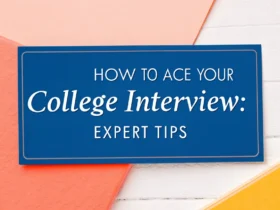
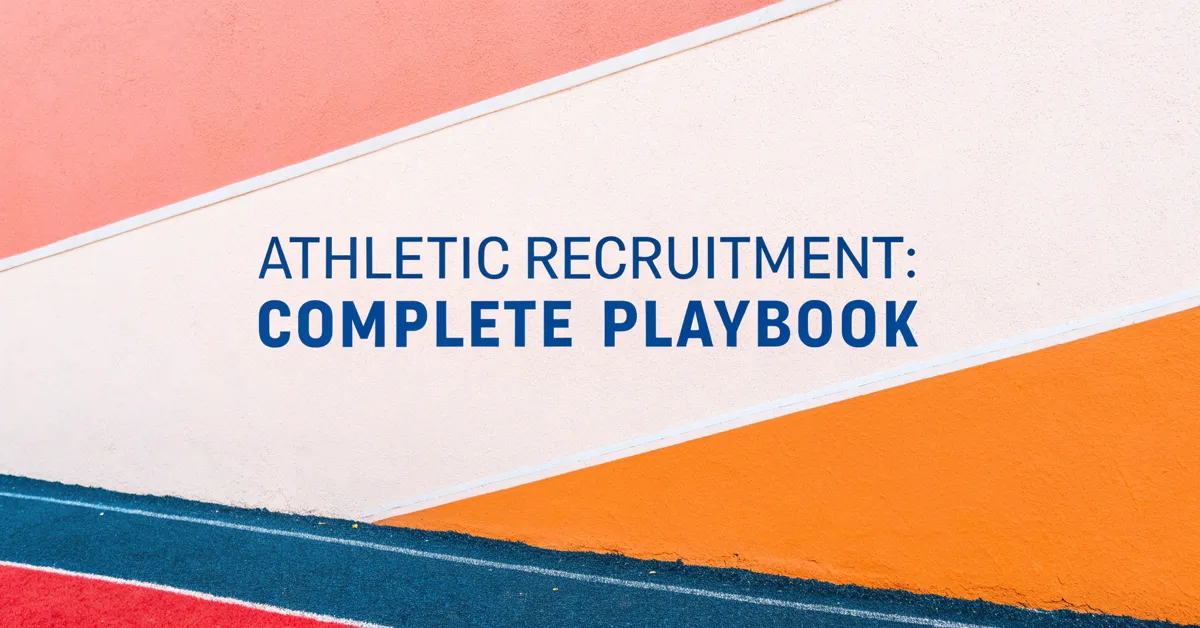
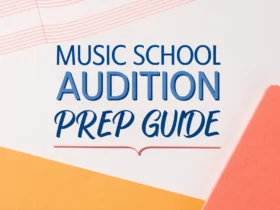






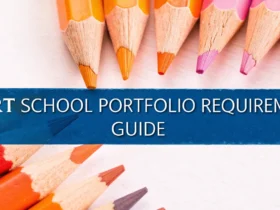
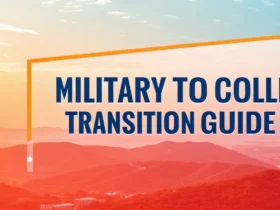
Leave a Reply
View Comments